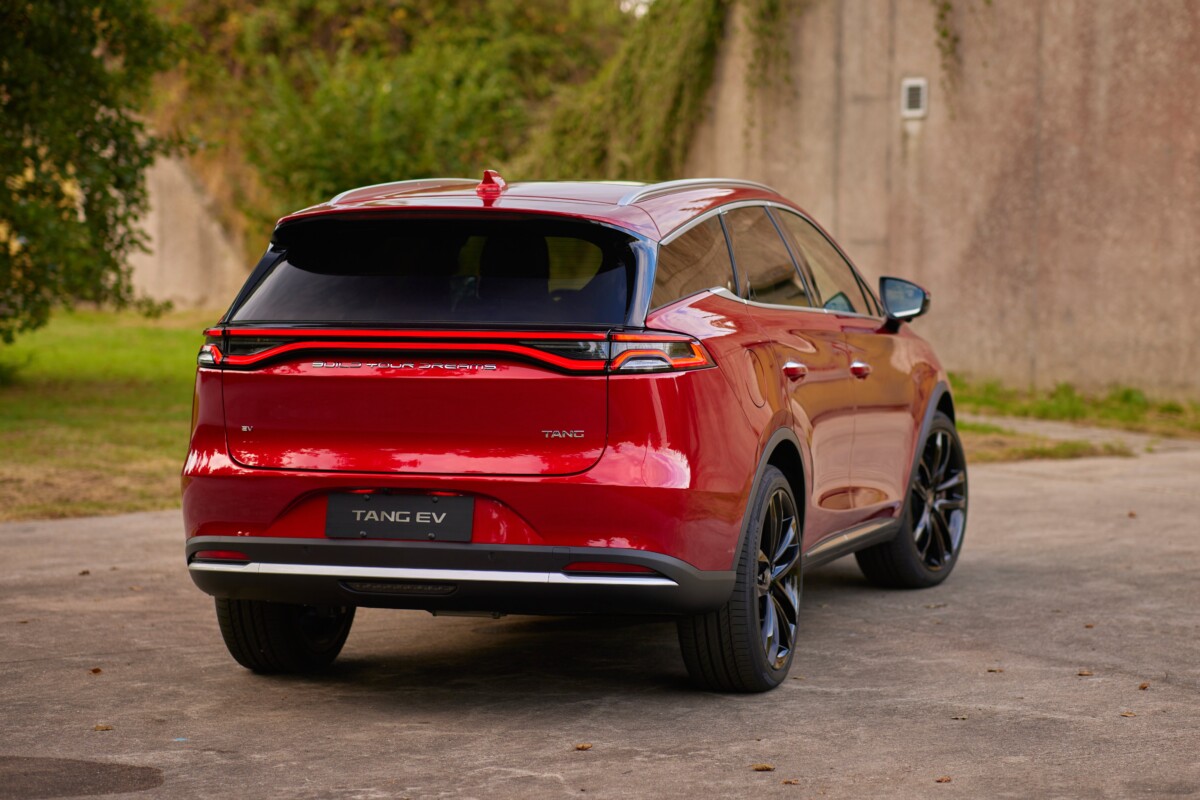After presenting a real range of electric cars in record time, the Chinese manufacturer BYD intends to improve its products via some welcome updates. The opportunity to get closer to its biggest rival: Tesla. The BYD Tang SUV is expected to receive a nice hardware update during the second quarter of 2024.
There should be something new from BYD but this time, once is not customary, it will not be a new product, but rather an update of an already existing model. And the model in question, we already know it well since it is the BYD Tang, a model that we had already tried at Survoltés.
To face its main competitor in the world of 100% electric premium SUVs, namely the Tesla Model information from German media Suddeutsche. The update would take place during the second quarter of 2024.
Improved autonomy and charging power
Thus, the battery capacity would increase from 86 to 108 kWh and the WLTP autonomy from 400 to 530 kilometers. The manufacturer has reportedly improved the AC charging capacity from 7 to 11 kW. And in the future, until 190kW will be possible on DC charging stations instead of the current 120 kW, thanks to the larger battery capacity. Recharging should still take around 45 minutes to go from 10% to 80%.
In Germany, a promotion currently allows you to obtain it for 55,700 euros. Prices for the new Tang are not yet known, but they should not differ too much from 70,800 euros in base price in France.

In fact, it may seem expensive, but the Tang, with its 4.87 meters long, is a good deal compared to the Tesla Model 990 euros. The American SUV, however, allows more versatility, with a WLTP autonomy announced at 625 km for a 95 kWh battery. And therefore much lower consumption.
With this new update, the Tang is getting closer, especially since the Chinese SUV has the good idea to offer seven seats as standardwhen you still have to add 4,200 euros on the Model X.
BYD Han soon to be affected
BYD would also have improved the chassis part, with active shock absorbers to better curb the rolling phenomenon, inherent to this type of large SUV. The combined power of the two engines of 380 kW (516 hp) and the top speed of 180 km/h remain the same.
It is quite possible that the Han electric sedan will also get a facelift within a few weeks. Indeed, the technical basis of the Han and the Tang is identical: both have all-wheel drive, a battery with LFP cells (with slightly different capacities of 85.4 kWh and 86.4 kWh respectively) and both are based on thermal models.
Want to join a community of enthusiasts? Our Discord welcomes you, it is a place of mutual help and passion around tech.
